ISO 13485 Certification In Johannesburg
Get Free Consultation
PopularCert is your trusted partner for ISO 13485 certification in Johannesburg, offering expert guidance throughout the certification process. ISO 13485 certification ensures that medical device manufacturers and suppliers in Johannesburg comply with international quality management system standards. This certification is crucial for demonstrating the ability to consistently provide safe and effective medical devices. Achieving ISO 13485 enhances credibility, increases customer trust, and opens doors to global markets. The certification process involves thorough documentation, process improvement, and regular audits to ensure continuous compliance. ISO 13485 also helps organizations meet regulatory requirements and minimize risks related to product quality. By implementing this standard, companies in Johannesburg can improve operational efficiency and ensure high-quality practices throughout their operations.
Why ISO 13485 Certification in Johannesburg is Important?
ISO 13485 certification is crucial for organizations involved in the design, production, and distribution of medical devices in Johannesburg. This globally recognized standard ensures that your quality management system complies with regulatory requirements, demonstrating your commitment to producing safe and reliable medical devices. Achieving ISO 13485 certification enhances customer confidence, opens new market opportunities, and establishes trust with stakeholders. It also helps your organization stay ahead of local and international regulatory changes, streamlining processes and reducing operational risks. By prioritizing ISO 13485 certification, businesses in Johannesburg can boost their competitiveness and ensure continuous improvement in the medical device industry.
How to Get ISO 13485 Certification in Johannesburg ?

Process to Get ISO 13485 Certification in Johannesburg
Consultation and Gap Analysis
PopularCert’s experts analyze your organization's specific needs and existing systems to identify areas requiring enhancement to meet ISO 13485 standards. A detailed gap analysis ensures a clear path toward compliance.
Planning, Documentation, and Policy Development
Based on the gap analysis, we design a tailored implementation plan, determine resource requirements, and support the development of essential policies and documentation. These are seamlessly integrated into your current operational processes.
Training and Awareness
We provide comprehensive training to ensure your team fully understands the ISO 13485 requirements and their roles in maintaining an effective quality management system for medical devices.
Internal Audit and Management Review
Our team conducts internal audits to evaluate the system’s effectiveness and resolve non-conformities. A management review ensures the system aligns with your organization’s objectives and ISO 13485 standards.
External Certification Audit and Certification
Upon successful completion of the external audit by an accredited certification body, your organization will be awarded the ISO 13485 certification. This achievement demonstrates your commitment to medical device quality, regulatory compliance, and customer trust, enhancing your reputation in the global market.
Benefits of ISO 13485 Certifications In Johannesburg
- Enhanced Credibility : ISO stamps of approval show a company's dedication to high standards, safety, and being green. This lifts how customers, partners, and everyone else view the company. Plus, it shows they can be relied on.
- Increased Customer Satisfaction : ISO standards help businesses offer dependable products and services. This way, they constantly fulfill what customers want. As a result, people are happier and stay loyal.
- Global Recognition : ISO certifications hold global recognition, opening doors to markets worldwide and creating chances for business growth.
- Risk Management : ISO certifications help lessen risks. They put a system in place to figure out and manage potential problems. This leads to fewer accidents and mistakes in a company's day-to-day tasks.
- Legal and Regulatory Compliance : Often, ISO standards sync with laws and rules in many fields. This helps companies keep in line and avoid pricey fines or legal problems.
Types Of ISO Certification In Johannesburg
Get Free Consultation
Our Clients
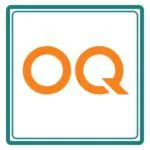

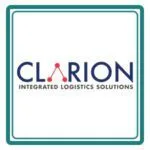


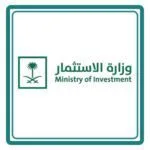
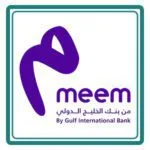




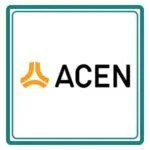
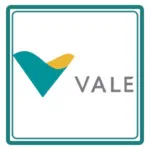



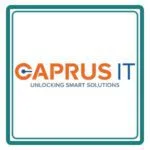

Cost of ISO 13485 Certification in Johannesburg
The cost of ISO 13485 certification in Johannesburg varies based on factors such as the size, complexity, and selected certification body of the organization. Typical expenses include documentation, implementation, audit fees, and staff training. Investing in ISO 13485 certification enhances the credibility, regulatory compliance, and operational efficiency of medical device manufacturers.
Achieve medical device compliance with regulatory standards through ISO 13485 Certification in Johannesburg. Learn how to get and apply with expert consultants offering customized services at the best cost.
Why Choose PopularCert for ISO 13485 Certification in Johannesburg?
PopularCert is your trusted partner for ISO 13485 certification in Johannesburg. We offer strategic, tailored support at every stage of the certification process. Our expert consultants guide you through the entire journey, from initial evaluation to final certification, ensuring your company meets international standards. We understand the unique challenges in Johannesburg’s medical device industry and provide personalized solutions to help you navigate local regulations effectively. With a focus on quality and efficiency, we ensure a smooth certification process and ongoing support to keep you compliant.
Customer satisfaction is our top priority. You can rely on prompt, professional service and expert advice. For more information.
GET A FREE CONSULTATION NOW
FAQ
What is ISO 13485 and why is it important in Johannesburg?
ISO 13485 is an international standard that outlines the requirements for a quality management system specific to the medical device industry. In Johannesburg, adherence to ISO 13485 is crucial for ensuring the safety and efficacy of medical devices produced and distributed in the region. Compliance to this standard helps manufacturers maintain consistency, regulatory compliance and customer satisfaction, fostering trust in the industry.
What are the Benefits of ISO 13485 certification in Johannesburg
ISO 13485 certification in Johannesburg assures compliance with international standards for quality management system in medical device manufacturing. It enhances market credibility, ensures regulatory compliance, streamlines processes, improves product quality, fosters customer trust and facilitates market access, fostering growth and competitive advantage in the medical device industry.
Who Should Get ISO 13485 Certification in Johannesburg?
Laboratories of any size that perform testing and calibration in Johannesburg, seeking to demonstrate their operational competence and reliability can benefit from this certification.
How Does ISO 13485 Certification Work in Johannesburg?
ISO 13485 certification involves several steps: choosing the certification consultant and certification body, conducting an initial assessment, implementing necessary quality management system changes, undergoing audits and achieving certification upon meeting all the requirements for medical device quality management.
To obtain ISO 13485 certification, you will need to successfully complete an Initial Certification Audit. After earning the initial certification, you will need to complete yearly surveillance audits and re-certification audits every three years to maintain your certification.
